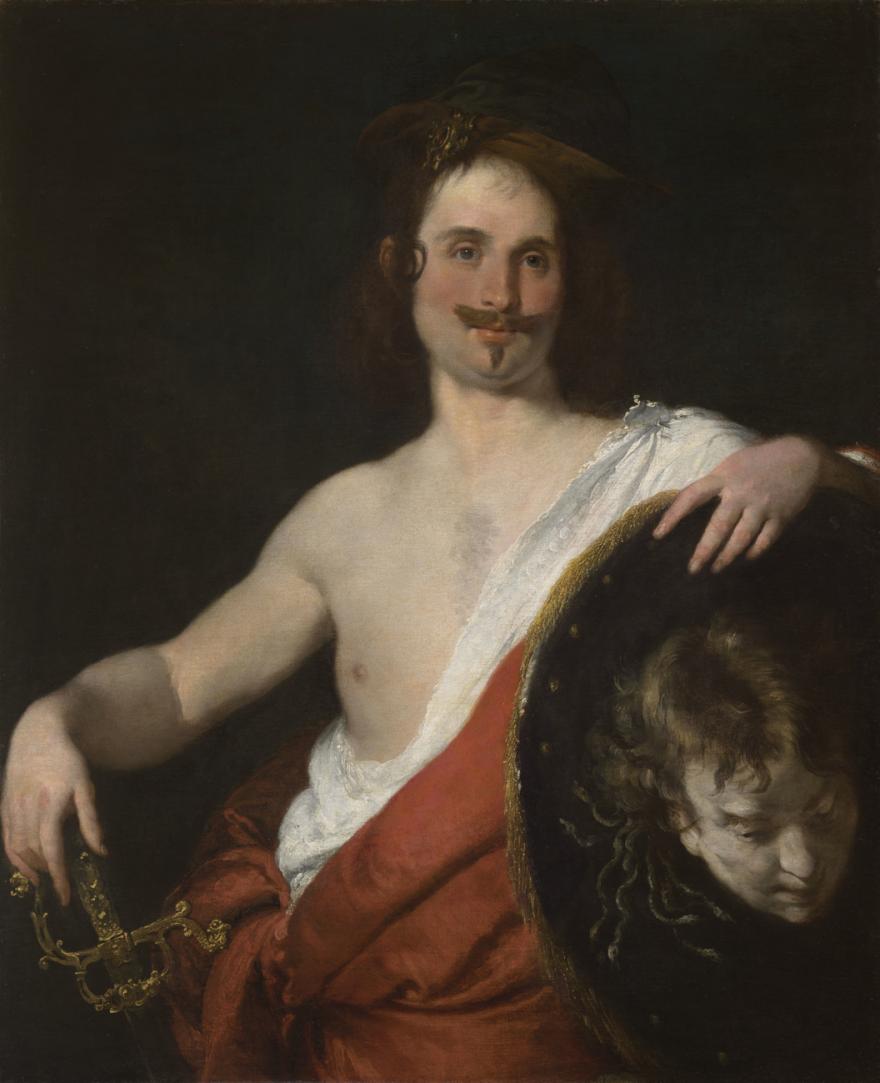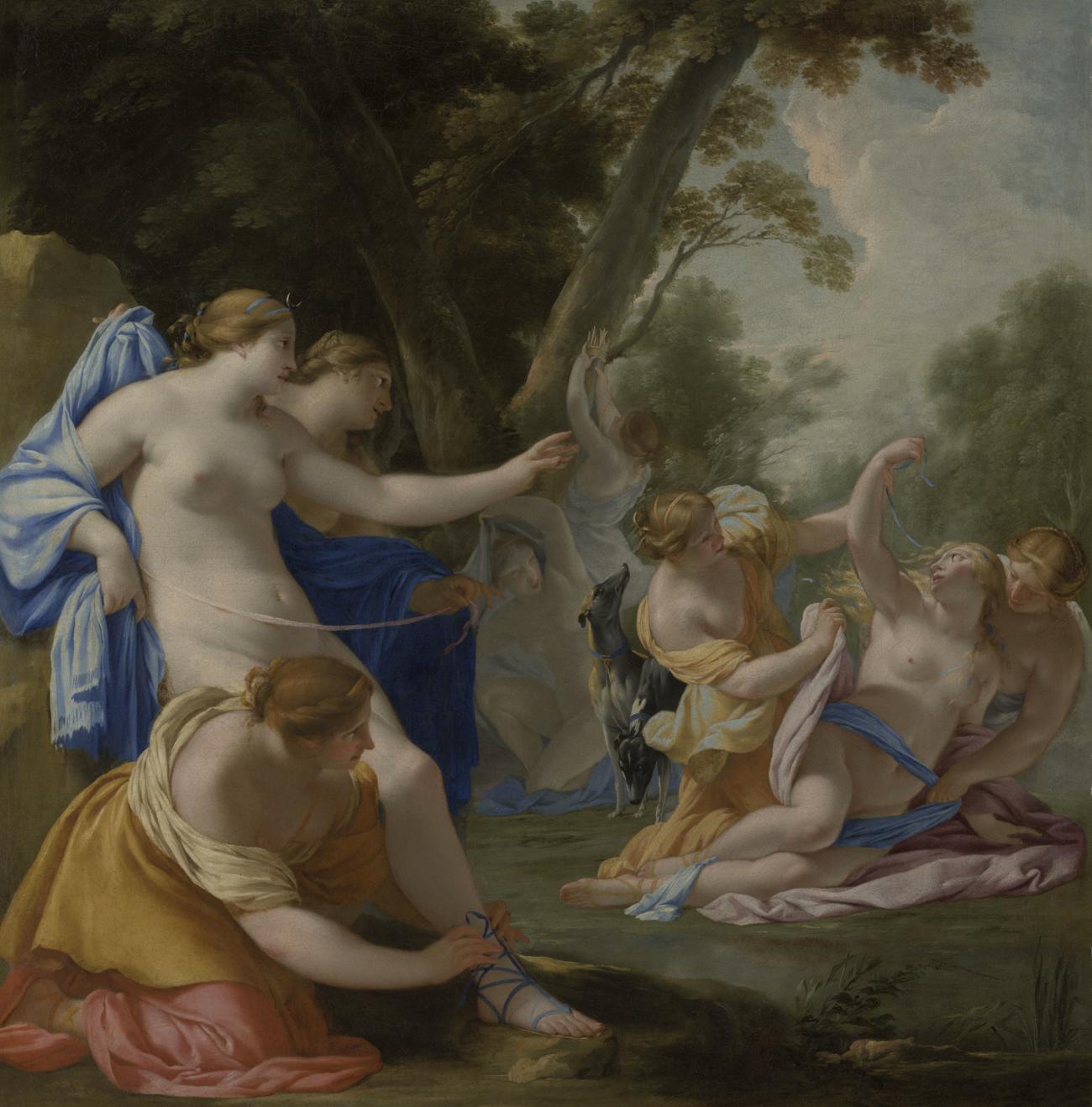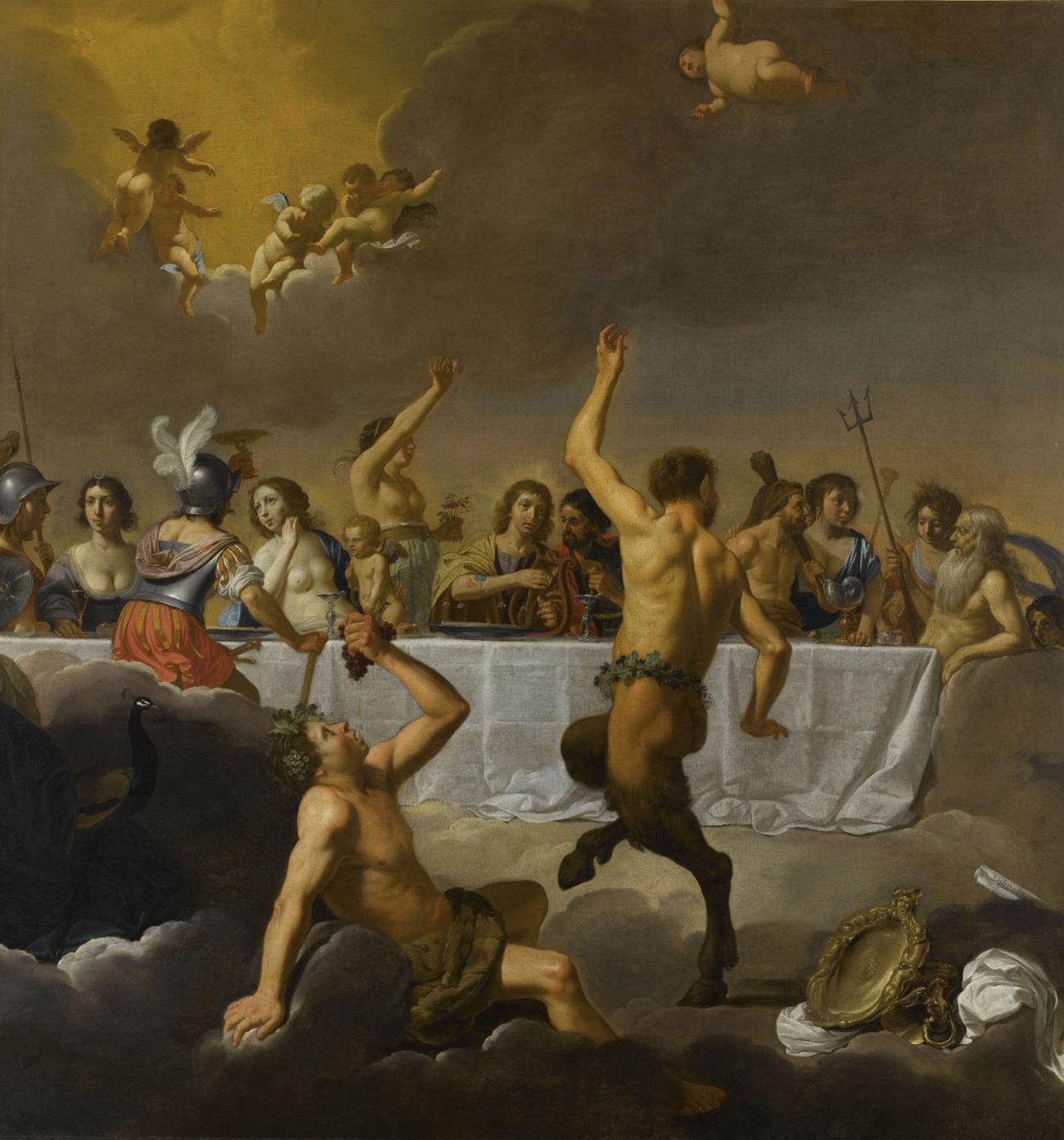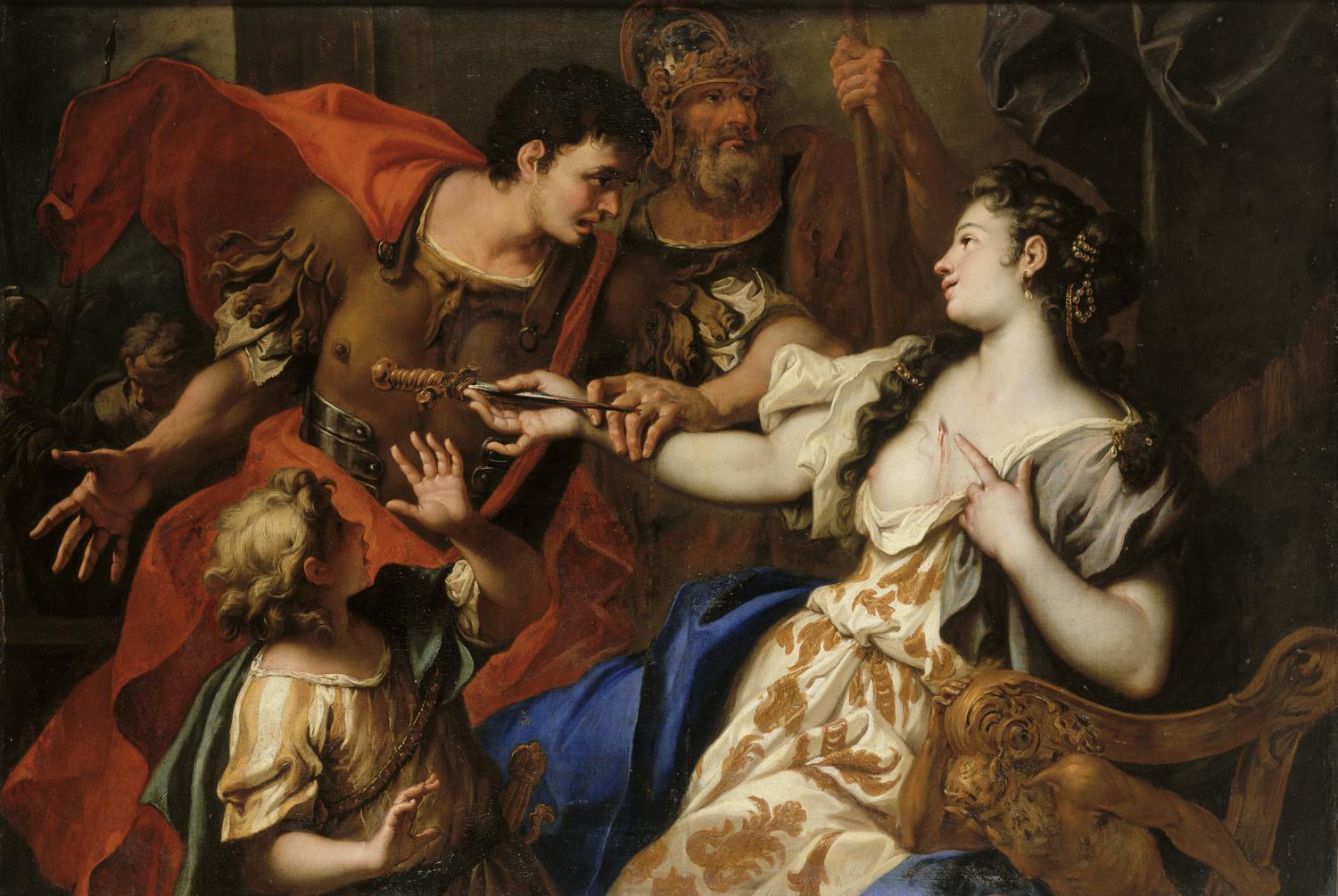
École italienne
Portrait of Giovan Donato Correggio as Perseus
In this mythological portrait of a noble Venetian merchant, the fluent brushwork, the range of gestures, the luminosity of the skin tones and the densely applied paint, are typical of the artist’s early years in Venice. The freedom in the composition, the narrative invention and the humour mixed with irony, replace the Northern European models circulated in Genoa by Rubens and Van Dyck. However the reds, whites and dark greens are those of the artist’s Genoa period.
In the fifteen version of David à la tête de Goliath [David with the Head of Goliath] and of Judith à la tête d’Holopherne [Judith with the Head of Holophernes] the figure, depicted half length and in three quarter profile, holds a weapon in the right hand, and the head of the vanquished in the other. The source of this composition is the David of Simon Vouet, painted in Genoa in 1621.
Rather than the usual composition where the hero holds the head of the Gorgon by the hair, the head here is represented on the shield. It is not surprising that the artist, who frequented literary circles, should have chosen an iconography that was found on Roman coins, gems and sculptures. In the ancient rites of male initiation, Perseus, with Apollo, played an important role, and represented the ideal ephebe.
This painting shows a taste for masquerade and disguise, characteristics of the theatre and of Baroque Venice. This was a culture that allowed an ambivalence between the person portrayed, with all attributes of a hero, and the hint of irony by the painter, who, having looked closely at the true nature of his model, conveys a nonchalance and bonhomie that is quite a long way from the myth.
